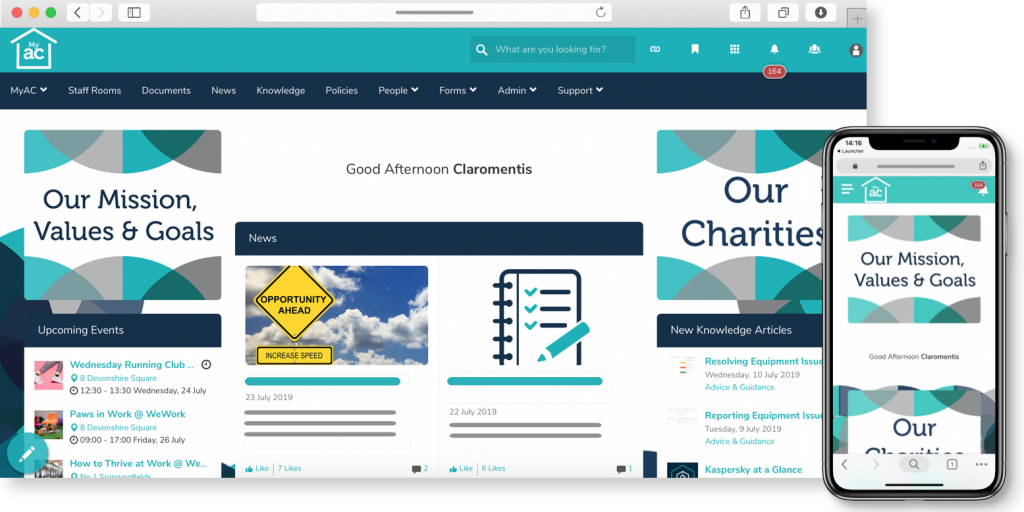Risk is an important factor to consider when embarking on any IT project, with even the most diligently-planned software implementations having at least one chink in their armour. Though no plan is completely foolproof when you’re setting out to improve your digital workplace, there are certain universal stumbling blocks which all managers need to be aware of. In this post, we’ll go over some of the most common challenges facing intranet software projects, and the best advice on handling them.
The 4 types of intranet project risks
- Project delays and overrun
- Lack of stakeholder involvement
- Resource and staffing risks
- Sub-par content management
Project delays and overrun
Unfortunately, it’s fairly common for large-scale IT projects to run over their budgets and timeframes. This, depending on the project, can have a seriously detrimental effect on its overall value. Intranet software projects, because there’s so many different facets to them, run a particularly high risk of cost and schedule overrun.
Intranet projects require a huge investment, not only in terms of finance, but also various other resources, such as staffing, time, and changing business priorities. The simplest way to minimise this kind of risk is by drafting a clear and comprehensive plan.
Take the time to get a clear idea of the scope of your project, then leave yourself some wiggling room in terms of the required timeframe and staff. It’s also important to set out an effective framework for the sign-off and decision-making processes.
Who will be consulted on major decisions? Who will have the final say? With this area of the project, you should look for any steps that can be condensed or cut out altogether.
Lack of stakeholder involvement
A huge proportion of corporate intranet projects crash and burn, simply because the higher-ups at the organisation don’t pitch in enough. Even if you’ve been given full responsibility for the intranet project in question, getting major stakeholders involved will make it easier to initiate the necessary changes in your company culture, reduce the chance of low adoption, and secure those figures who will be the most effective at motivating and engaging the end users.
Getting around this challenge is tough, but certainly not impossible. Start off by mapping out the key stakeholders, and gauging their level of interest.
Next, identify their major objectives, and how your intranet project will contribute to these. This should help you secure the necessary support for your project, and all the benefits that will come with it. From there, be sure to keep an open line of communication, especially when things go wrong. Transparency and frequent updates are integral to the success of these projects.
Resource and staffing risks
The average intranet software project requires work from many different departments and individuals. This is true both for the implementation process, and after the system goes live. The human resources you’ll need for your project can either come from within the company, or externally.
If you lean on the workforce within the organisation, you run the risk of staff having to stay on top of their intranet responsibilities, alongside their standard, day-to-day tasks. These instances of conflicting priorities can really slam the brakes on an otherwise promising project. In the planning stage, make sure that all roles and responsibilities for the team are agreed upon.
Everyone involved should know precisely what’s expected of them, both over the course of the project and afterwards. If, for whatever reason, certain roles and responsibilities change, then the handover needs to be planned carefully, then documented and agreed upon by all the relevant stakeholders.
While we’re on the subject, requirement changes can also mark a significant risk for intranet projects. If any key requirements change while the project is still ongoing, it can easily result in long periods of downtime and higher overall cost.
Sub-par content management
Companies requiring an intranet system have huge knowledge assets. With this in mind, an intranet needs to be designed in a logical and user-friendly way, ensuring the entire workforce can use it confidently, and find whatever it is they’re looking for. Content management is absolutely essential to the short and long-term success of an intranet.
When content is managed poorly, the system will become nothing more than a chaotic dumping-ground for information in different forms. This will lead to much of the content becoming outdated and useless, which in turn will lead to lots of wasted time and effort.
When planning out your intranet project, you need to make information governance and architecture a major part of the process. Profiling staff by user types, and having a thorough understanding of frequent tasks and user journeys, can be a huge help when you’re creating information architecture from scratch, as it will give you clear requirements your content management will have to meet.
If this isn’t practical, it’s a good idea to form a partnership with an intranet specialist, who will be able to provide the support and services needed to guide you through the process.



